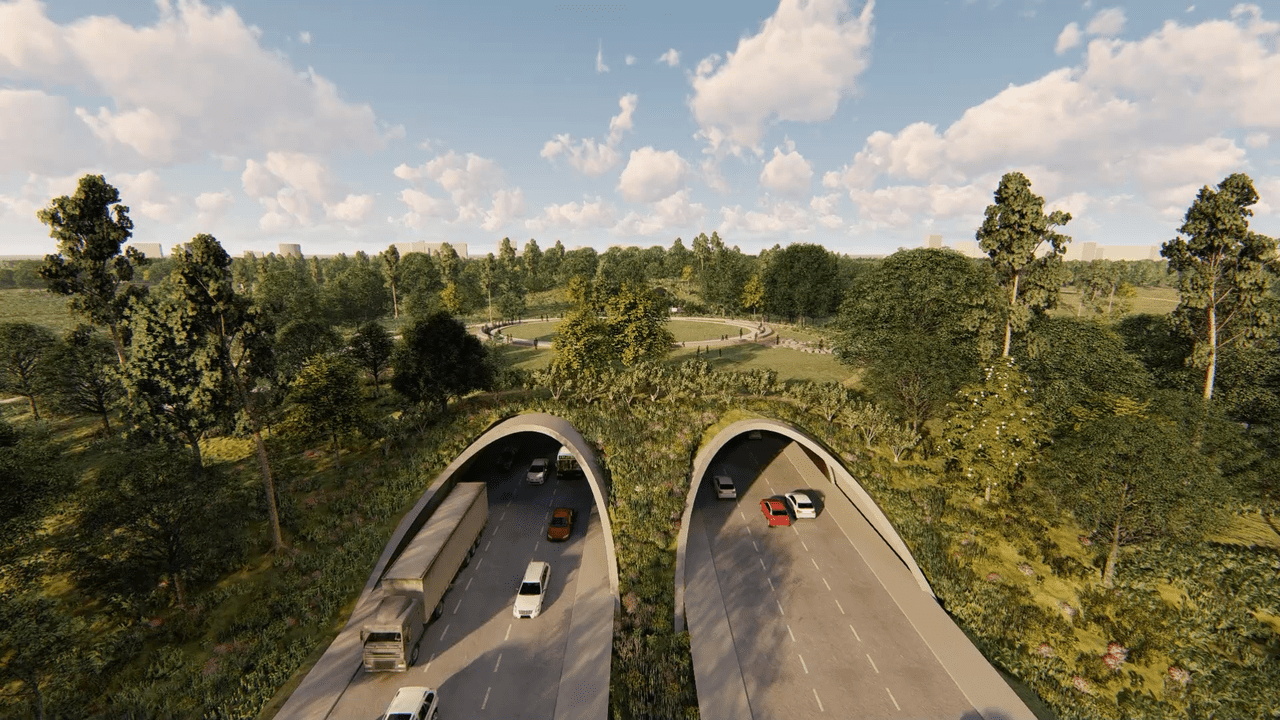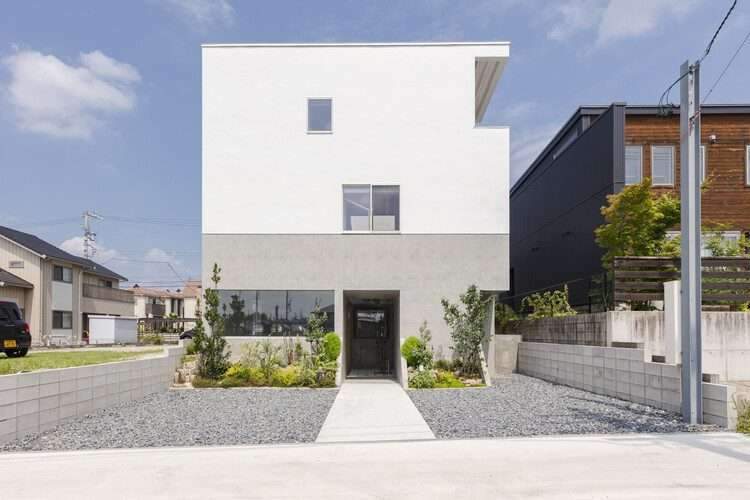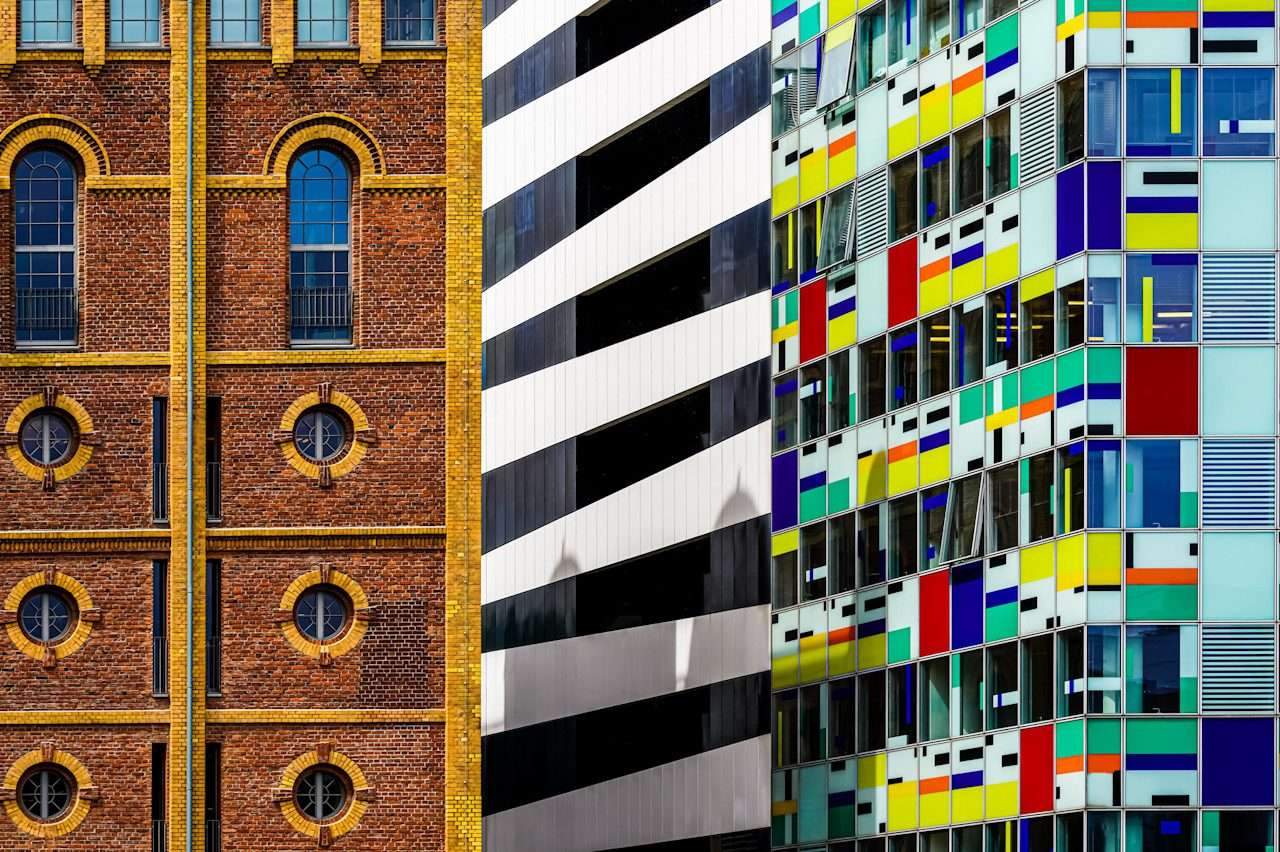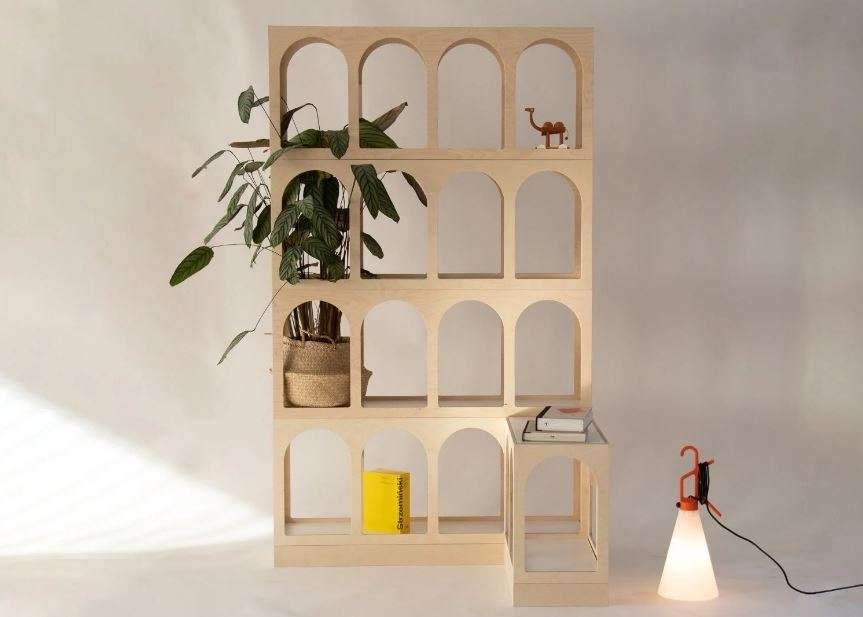Jakarta, Indonesia’s capital, is a vibrant urban centre where historical heritage meets contemporary development. Its architecture reflects a unique blend of colonial past and modern ambition. This article examines Jakarta’s architectural landscape by comparing two key areas: the Old Town (Old Batavia) and the modern city centre. It explores the defining architectural features, the factors shaping this diversity, and the challenges of preserving Jakarta architectural heritage amid urban expansion. Additionally, it highlights the role of this architectural diversity in strengthening the city’s cultural identity.

Old Town: The Legacy of Colonial Batavia
Located in northern Jakarta, the Old Town, known as Old Batavia, is a testament to the Dutch colonial era that began in the 17th century. The area features buildings in the Dutch colonial style, characterized by simple brick facades and sloped roofs covered with red tiles. Notable examples include the Fatahillah Museum (formerly the city hall) and Sunda Kelapa Port, a once-thriving trade hub.
Buildings in this area are designed for the tropical climate, with large windows for ventilation and internal courtyards. Local influences are evident in the use of wood and carved decorations. The Old> Old Town reflects Jakarta’s historical role as a global trading center, where European and Asian cultures converged.

Table: Architectural Features of Old Batavia
| Architectural Feature | Description |
|---|---|
| Materials | Red brick, tiles, wood |
| Design | Simple facades, large windows, internal courtyards |
| Influences | Dutch colonial, local Indonesian elements |
| Notable Examples | Fatahillah Museum, Sunda Kelapa Port |
City Center: Jakarta’s Modern Vision
In contrast, Jakarta’s city center is the hub of modern development, dominated by skyscrapers and commercial buildings. This area showcases contemporary architecture, with glass and steel creating innovative designs. Prominent structures include Wisma 46 Tower and the Grand Indonesia complex, symbolizing the city’s economic aspirations.
Modern buildings in the city center incorporate sustainable technologies, such as energy-efficient air conditioning and heat-reducing glass facades. Designs often integrate Indonesian cultural elements, like traditional geometric patterns in building exteriors. This area reflects Jakarta’s drive to balance globalization with local identity.

Table: Architectural Features of Jakarta’s City Center
| Architectural Feature | Description |
|---|---|
| Materials | Glass, steel, concrete |
| Design | Skyscrapers, glass facades, sustainable designs |
| Influences | Global with local Indonesian touches |
| Notable Examples | Wisma 46 Tower, Grand Indonesia |
Factors Shaping Architectural Diversity
Jakarta’s architectural diversity stems from multiple factors. First, its colonial history introduced European influences, while Javanese, Chinese, and Arab cultures added local elements. Second, rapid economic growth in recent decades has driven the construction of modern buildings to meet business and tourism demands. Finally, the tropical climate influences both historical and modern designs to ensure comfort and sustainability.

Challenges: Preserving Heritage vs. Urban Expansion
Jakarta faces significant challenges in balancing heritage preservation with urban growth. Old Batavia suffers from neglect and building deterioration due to limited funding and maintenance. Meanwhile, rapid expansion in the city center threatens historical sites, as older structures are often replaced by commercial projects.
Local authorities aim to protect heritage through restoration programs and designating certain buildings as cultural sites. For instance, the Fatahillah Museum has been restored as a cultural center. However, these efforts face obstacles such as high costs and development pressures.
The Role of Architecture in Enhancing Cultural Identity
Jakarta’s architecture plays a vital role in reinforcing its cultural identity. Old Batavia preserves the city’s historical memory, while skyscrapers symbolize its future ambitions. This diversity attracts visitors and fosters local pride. Incorporating Indonesian cultural elements into modern designs enhances Jakarta’s appeal as a global destination with deep local roots.

Frequently Asked Questions (FAQ)
What is the difference between the architecture of Old Batavia and Jakarta’s city center?
Old Batavia features Dutch colonial designs with simple brick buildings, while the city center is dominated by modern skyscrapers with glass facades.
Can historical buildings in Jakarta be visited?
Yes, many buildings, such as the Fatahillah Museum, are open to the public as museums or cultural sites.
What challenges exist in preserving Jakarta’s architectural heritage?
Challenges include insufficient funding, building deterioration, and pressures from urban development.

Table: Summary of Key Points
| Aspect | Old Batavia | City Center |
|---|---|---|
| Time Period | 17th-19th Century | 20th-21st Century |
| Architectural Style | Dutch Colonial | Modern, Global |
| Materials | Brick, tiles, wood | Glass, steel, concrete |
| Challenges | Neglect, building deterioration | Pressures from real estate development |
| Cultural Significance | Historical memory | Symbol of progress and globalization |
ArchUp Opinion
From an analytical perspective, Jakarta architectural heritage tells the story of a city striving to balance its past and present. Old Batavia offers a glimpse into the city’s rich history, but its neglect poses a significant challenge. Conversely, the city center elevates Jakarta’s status as an economic hub, yet risks overshadowing its historical identity if expansion is not carefully managed. Critically, Jakarta requires more comprehensive strategies for heritage preservation, such as increased restoration funding and integrating historical buildings into urban development plans. This balance is not merely a cultural necessity but an investment in the city’s identity and global appeal.






